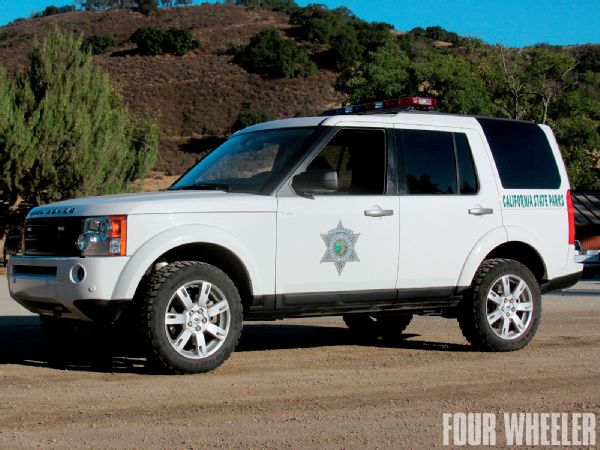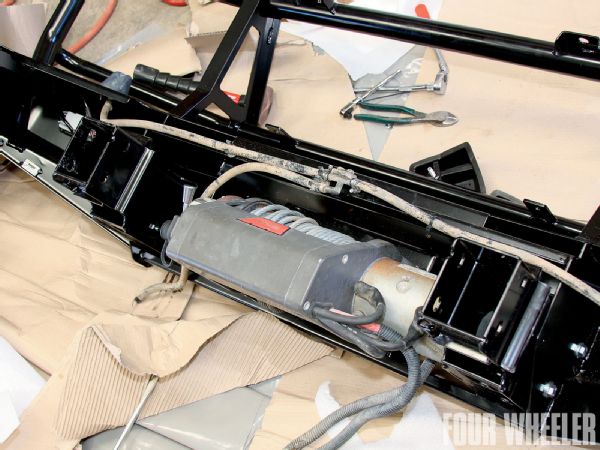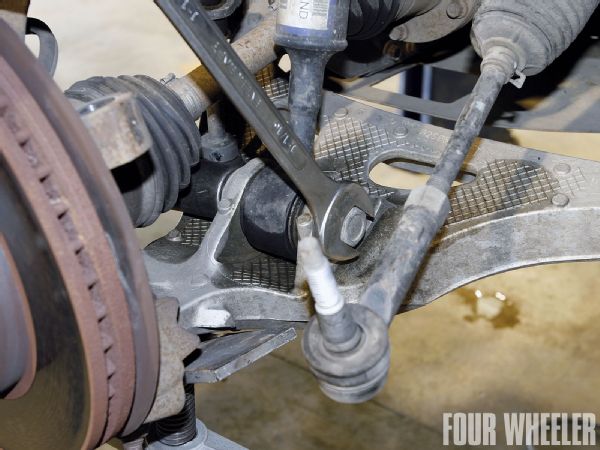
Saavy readers will remember the September '09 issue, where we first showcased some hefty bolt-on upgrades for a 2000 Land Rover Discovery. This time around, the park rangers at Hollister Hills turned us loose on the newest member of their fleet: A 2009 Land Rover LR3 loaned to the park by Land Rover North America. Rangers tell us that this LR3 has proven to be the most versatile vehicle in their fleet-with its nimble size and terrain-conforming air suspension, it simply gets the job done better than most other factory 4x4s can. While that's no surprise to us, we were astonished to learn that the LR3 is often used to patrol the hard-to-reach "motorcycle-only" portions of the park, simply because the rangers don't have to worry about it getting stuck on the tight and often overgrown trail access roads. They also tell us they wish all of their patrol vehicles came with such surefooted capability. It's true-right out of the box, Land Rovers are quite capable in the dirt. However, when subjected to a rigorous regimen of trail work, as is the case with most of Hollister's fleet, even the LR3's factory-engineered trail attributes can be improved by adding a combination of bolt-on products designed to add function and utility to the sharp-looking LR3. Check it out.
 Before: In stock form, this Land Rover might spank the regular mall-cruising luxury SUV. For Hollister Hills, this stocker's capabilities were tailored and improved to prepare it to meet the intense demands put forth by rescue operations in remote areas.
Before: In stock form, this Land Rover might spank the regular mall-cruising luxury SUV. For Hollister Hills, this stocker's capabilities were tailored and improved to prepare it to meet the intense demands put forth by rescue operations in remote areas.
Disco Update
We goofed: In the September 2009 issue, we showed you a Warn XD9000i winch as it was installed inside an attractive ARB bumper on a 2000 Land Rover Discovery. What we didn't know at the time was that ARB recommended a specific style of winch for their bumper system. Mistakenly, we installed a winch that was already on the vehicle and was never intended to work with the ARB bumper. Subsequently, we found it difficult to access the remote control plug and winch engagement lever. Later, the mistake was pointed out to us. Had we read the instructions more closely, we would have found ARB's specific recommendations to use a winch with a remote-mounted solenoid pack, like the 9.5 xp shown above. On that note, we wanted to update everyone on the Discovery upgrades shown in Part One of this series; the vehicle is still roaming the many trails of Hollister Hills each and every day. We're told that the newly installed upgrades have performed flawlessly and without issue thus far. The upgrades have also given the vehicle a newfound favoritism among park rangers. As for the LR3s upgrades, check out the next edition of "Armed for Duty" in the coming months.
 PhotosView Slideshow
PhotosView Slideshow





 PhotosView Slideshow
PhotosView Slideshow










